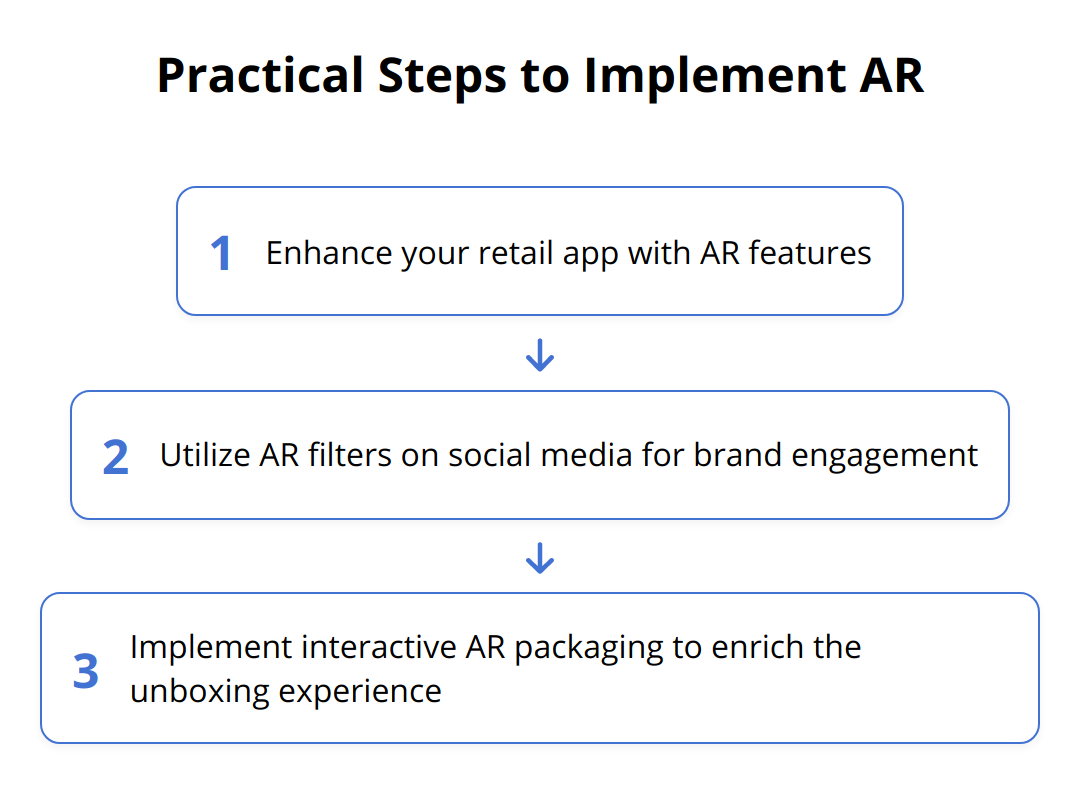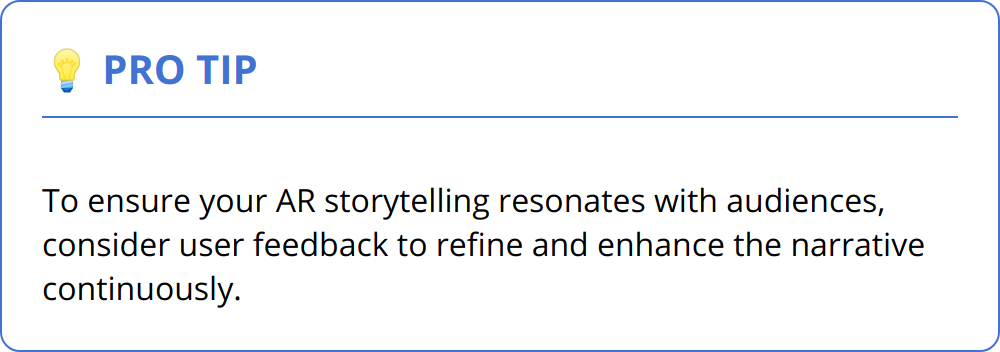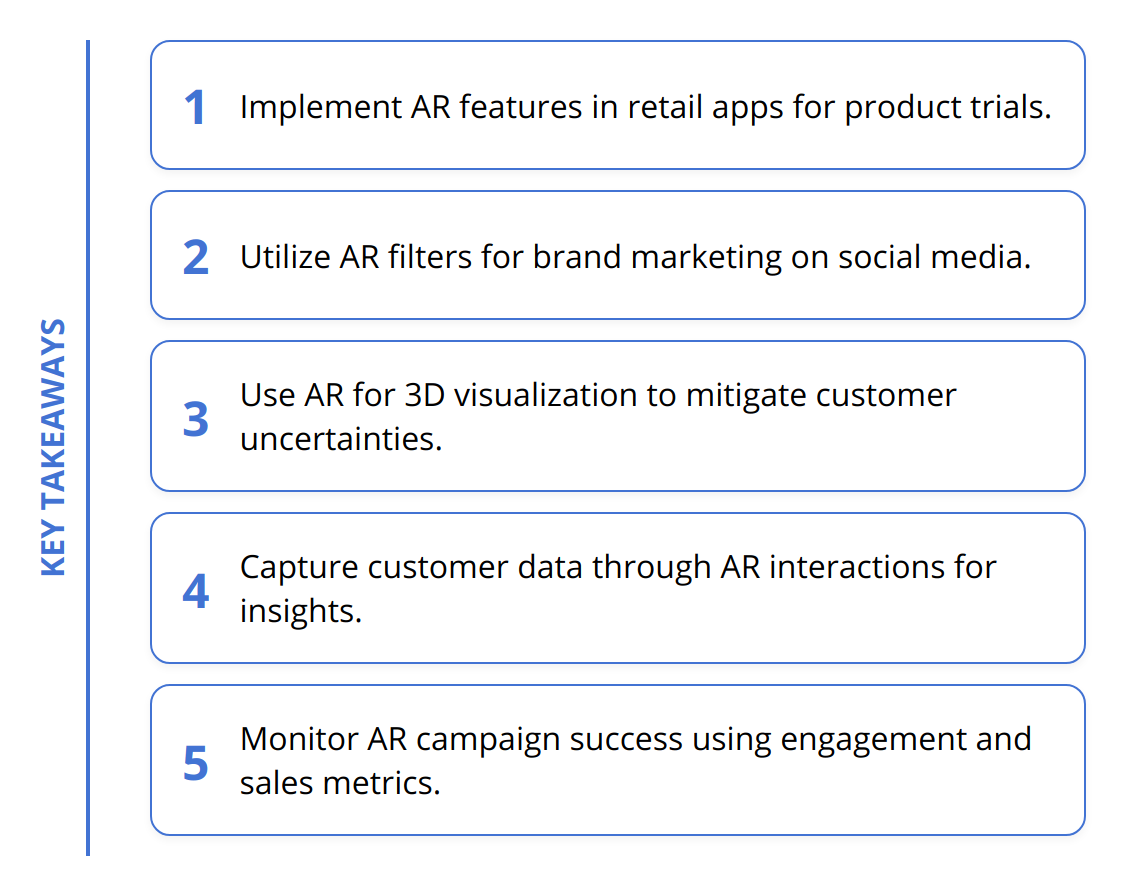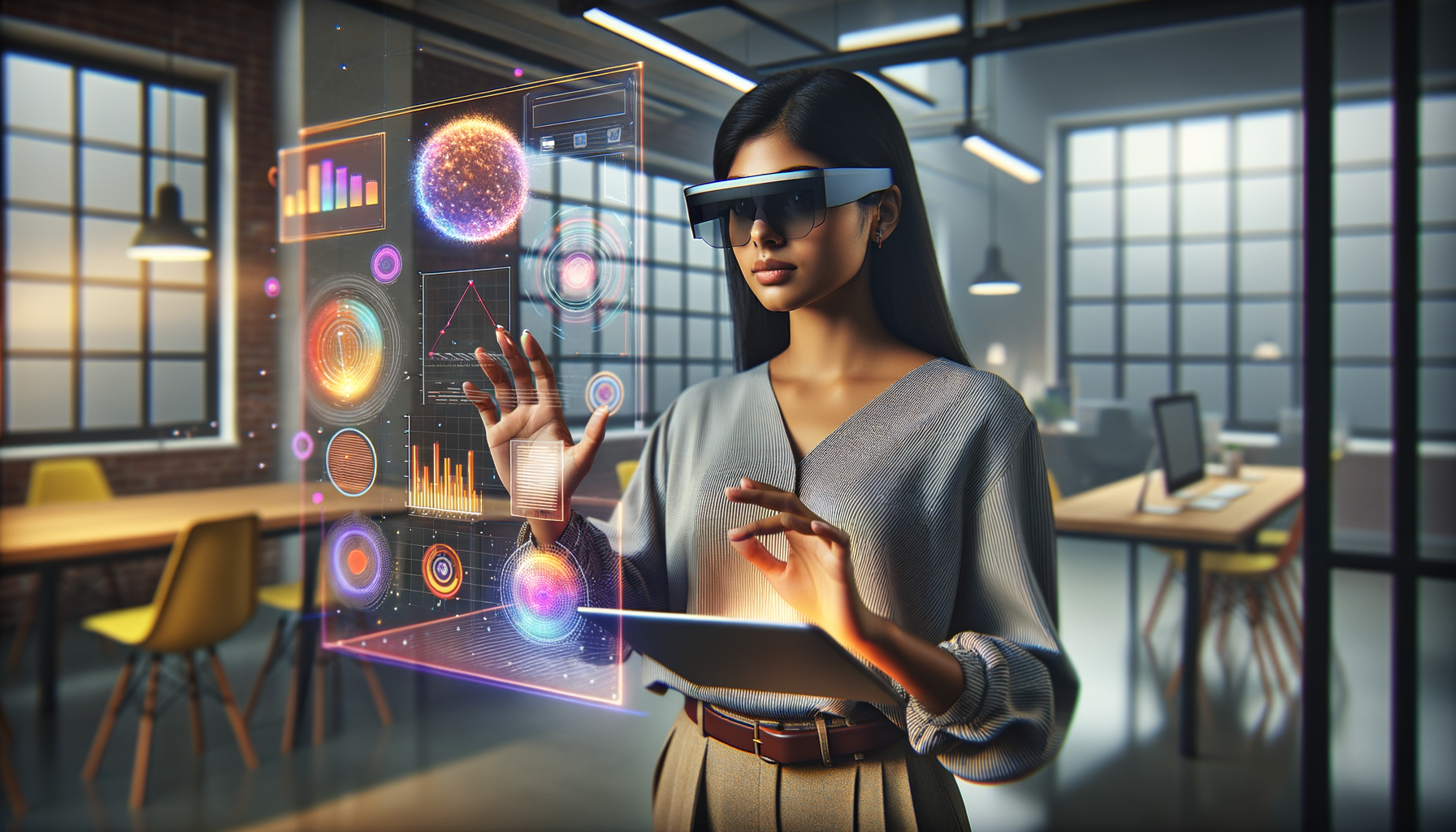Augmented reality (AR) is swiftly transforming the landscape of customer engagement, offering experiences that merge the physical and digital realms. We at Emplibot recognize the immense potential that AR, paired with AI, has for personalizing and enhancing the customer journey. Through virtual product trials and interactive narratives, these technologies are redefining the way brands connect with their audience. This blog post explores practical strategies and showcases real-world successes to help you leverage the power of AR and AI in your marketing endeavors.
Engaging Customers with Augmented Reality
The leap into Augmented Reality (AR) marketing isn’t just about staying current with trends; it’s a strategic move to deepen customer connections in a landscape where attention is the most valuable currency. By dynamically linking the physical and online shopping experiences, retailers are seeing customer engagement skyrocket. With AI algorithms feeding into AR systems, personalization reaches new heights, turning generic marketing into tailored experiences that resonate with individual preferences.
Virtual Product Trials: The Trial Revolution
Imagine your customers being able to try on a watch, see how a sofa fits in their living room, or even test makeup shades—all from the comfort of their homes. This isn’t the future; it’s the present, and it’s profoundly changing how customers interact with products. Virtual product trials powered by AR create an interactive playground that not only boosts engagement but significantly aids the decision-making process. By leveraging these trials, businesses can effectively diminish the hesitation gap that often leads to abandoned carts and lost sales.
For fashion, beauty, and home goods brands, the use of AR for virtual product trials isn’t just another feature—it’s now expected by tech-savvy shoppers. Companies like Sephora and IKEA have set high standards with their AR try-on apps, leading to an industry-wide pivot towards these engaging digital solutions.

Combining AR with AI: The Personal Touch
AI shines when it comes to understanding customer behavior and tailoring experiences that hit the mark. Injecting AI into your AR marketing strategy can transform how customers see and relate to your brand. Here’s how:
-
Data-Driven Insights: AI analyzes shopping patterns and behaviors to customize AR experiences, ensuring each interaction feels like it’s made just for the customer.
-
Product Recommendations: Pairing AR with intelligent recommendation engines can suggest products in a highly engaging, visually rich format, which has been shown to increase conversion rates.
-
Customer Feedback Loop: AI can use feedback from AR interactions to refine and enhance the user experience, creating a cycle of continuous improvement and deeper engagement.
Practical Applications: Beyond the Gimmick
To harness AR effectively, it requires moving past the gimmick stage and adopting it as a vital part of your customer’s journey. Here’s how you can implement AR practically:
-
Enhance your retail app with AR features for trying products or visualizing items in context.
-
Use AR filters on social media platforms to promote brand awareness and create shareable content.
-
Implement AR packaging that customers can interact with to unlock additional content, enriching the unboxing experience.

Metrics to Watch
Implementing AR may sound appealing, but it’s important to monitor specific metrics to measure its success:
-
User Engagement: Track time spent on AR apps and features to gauge interest levels.
-
Conversion Rate: Compare the purchase behavior of customers who use AR features versus those who don’t.
-
Customer Satisfaction: Conduct surveys to understand if AR experiences are meeting customer expectations.
By applying these AR strategies, businesses can offer more than just a product; they provide an unforgettable experience that leads to brand loyalty and advocacy. And in terms of real numbers, businesses that have incorporated AR can see conversion increases by up to 40%, proving that AR isn’t just a novelty—it’s a powerful sales tool.
While the integration of AR and AI is still evolving, one thing is clear: offering an interactive, customized experience is becoming not only advantageous but essential for staying competitive in the digital age.
How to Add AR in Marketing
With augmented reality (AR) gaining traction, strategic implementation in marketing campaigns is more than a fleeting trend—it’s a magnet for customer engagement and sales. Making AR a core component of your marketing strategy will not only set your brand apart but will also drive tangible results.
Immersive Brand Storytelling Brings Your Narrative to Life
A brand’s story is its heartbeat, and AR provides a multisensory channel to bring that story to life. An unforgettable narrative is essential for capturing customer attention in a saturated market, and AR offers the tools to do just that. By creating a virtual world around your products or services, you make your brand story something that customers can experience, not just hear or read about. Take, for example, the New York Times’ AR journalism, which takes storytelling to a new level, allowing readers to step into the news story itself.
Here are some actionables to take your brand storytelling into the AR realm:
-
Craft a narrative that can unfold across multiple AR interactions, encouraging repeat engagement.
-
Partner with AR developers to create visually impressive experiences that align with your brand’s aesthetic and values.
-
Use AR to bring customer testimonials or product histories to life, offering a more engaging way to showcase your brand’s impact.

Enhanced Product Visualization Reduces Doubt
When customers can see exactly how a product looks in real life, they are more likely to buy. Use AR for 3D product visualizations that can be viewed from all angles, helping customers to overcome uncertainty. Furniture companies have seen success with AR apps that place products in a customer’s space before purchase, significantly reducing the likelihood of returns. This practical tactic does not just sell a product; it sells certainty and satisfaction.
For concrete results, consider these approaches:
-
Develop AR visualizations that allow for product customization in real-time, so customers can experiment with different options.
-
Analyze user interactions with AR features to understand which products attract the most attention and why.
-
Implement AR in product demos to illustrate functionality in a user’s immediate environment, enhancing understanding and reducing the return rate.
Location-Based Marketing Connects Virtual with Reality
Location-based AR marketing turns every environment into an interactive marketing opportunity, whether it’s in-store or at a special event. Users can unlock location-specific content, offers, or experiences, linking the virtual experience with physical foot traffic. For example, retailers like Walmart have explored AR to enhance shopping experiences by providing special offers to shoppers in different store locations, leading to an increase in in-store engagement.
To effectively use location-based marketing:
-
Design location-specific AR campaigns that incentivize customers to visit your physical locations.
-
Capture data on customer interactions to refine your local marketing strategies and offerings.
-
Ensure that AR experiences are smoothly integrated with the physical environment for a natural and intuitive user experience.

Businesses leveraging AR in marketing are witnessing more than just likes and shares; they see increased sales, deepened brand connections, and better customer retention. This is no flight of fancy; it’s the concrete result of harnessing AR’s potential. With these strategies in hand, your marketing campaign is set to become an immersive, interactive narrative that not only enchants customers but also drives them down the conversion funnel. As we continue to explore the digital frontier, tapping into AR’s capabilities will not just be an option—it will be imperative for marketing success.
How AR Boosts Sales
Augmented Reality (AR) in marketing isn’t just a cool feature—it’s a sales booster that can transform a shopper’s journey. Focusing on practical results, let’s take a closer look at how AR drives revenue by studying some successful campaigns.
IKEA tapped into the power of AR with its ARKit app, allowing customers to visualize and place furniture in their own space before making a purchase. This isn’t just a technological showpiece; it’s a tool that answers a real need. Shoppers often struggle to decide whether a piece of furniture will fit or look right in their homes. IKEA’s solution leads to more confident purchases and, as a result, a reduction in product returns. For retailers, this translates into increased sales and customer satisfaction—a clear win.

Sephora’s Virtual Artist app is another standout, utilizing AR for virtual makeup trials. Sephora recognized the challenge shoppers face when choosing makeup shades online. Their app enables customers to try on products using their smartphone camera, turning guesswork into fun and effective shopping. The Virtual Artist app not only improves customer experience but also drives sales by creating confidence in purchase decisions. Shoppers can virtually apply hundreds of makeup products, leading to a higher likelihood of adding items to the cart—an ingenious use of AR that shows the marriage of service and sales can be seamless.
Pepsi delighted commuters with an innovative AR experience at a London bus shelter. They converted standard waiting time into an engaging brand interaction by showcasing alien invasions, prowling tigers, and other scenes via an AR screen. Not your average ad, it was an unforgettable marketing moment that led to viral content. Pepsi didn’t just advertise a product; they created a brand encounter that likely inspired both conversations and purchases.
What these campaigns illustrate is proof that AR isn’t just for show—it’s for sales. The numbers back this up; businesses employing AR campaigns have witnessed up to 40% increases in conversion rates. From IKEA’s practical home planning tool to Sephora’s personalized shopping experience, and Pepsi’s entertaining public interactions—the lesson is clear: AR can add significant value to both the customer experience and the company’s bottom line.
If you are ready to create your own AR campaign, here are some key tips:
-
Focus on solving a customer problem, like IKEA did for home furnishing decisions.
-
Enable product testing to build confidence, akin to Sephora’s makeup trials.
-
Create shareable content that can turn any campaign into a talking point like Pepsi.
AR isn’t a future fantasy. It’s here, and it’s transforming how we shop, engage, and buy. Brands that have yet to explore this technology might find themselves left behind because if there’s one thing the IKEA, Sephora, and Pepsi campaigns show, it’s that AR is not just a marketing tactic, but a comprehensive sales strategy. After seeing these results, incorporating AR into your marketing could be one of the best investments for your brand’s future.
For further insights on leveraging AR technology for marketing, explore practical tips on implementing AR.
Assessing AR Marketing Outcomes
When you venture into the realm of AR marketing, knowing precisely how to measure its impact is essential. Determining whether your AR efforts are hitting the mark involves more than just gut feelings; it requires a deep dive into data that reveals customer interactions, satisfaction levels, and ultimately, the financial return on your investment.
Tracking Engagement and Conversion Rates
Engagement is the lifeblood of any AR campaign. High interaction levels mean your experience is captivating, which is a good sign that you are on the right track. However, the real measure of success lies in conversion rates. Look beyond the initial excitement of users and examine if engagement with AR features leads to actual sales. Businesses must set up robust analytics to track these critical metrics:
-
Duration and frequency of AR interactions
-
Conversion rates before and after the introduction of AR
-
User progression through purchase funnels that include AR touchpoints
Businesses witnessing a spike in sales and repeat interactions with AR features are clear indicators of a successful campaign.
Gleaning Insights from Customer Feedback
Listening is just as important as showcasing when it comes to AR. Gathering and analyzing customer feedback can provide a wealth of actionable data. Through surveys, direct customer feedback, and social listening tools, you can gauge the sentiment around your AR experiences. This feedback serves as a compass for optimizing and tailoring future AR initiatives. Look for comments on:
-
Ease of use and accessibility of AR features
-
Relevance and helpfulness of the AR experience in making a purchase decision
-
Suggestions for improvements or additional features
Feedback is a gateway to continuous improvement and heightened customer satisfaction.
Monitoring Brand Perception
How consumers view your brand post-AR campaign is revealing. Effective AR marketing should elevate your brand’s perception, making it more innovative, customer-friendly, and ahead of the curve. Social media buzz, media coverage, and brand mention analysis will unveil shifts in brand perception. Monitor these channels to understand the broader impact of your AR marketing:
-
Sentiment analysis around brand mentions on social media
-
Changes in social media followers and levels of engagement
-
Increased brand recognition in market research following AR campaigns
Progressive brands harnessing AR technology gain traction in market visibility and differentiation.
By taking a structured approach to measure the results of your AR initiatives, you can ensure that your marketing isn’t just futuristic—it’s impactful.
For additional guidance on how to track and optimize these metrics with the latest digital tools, explore resources on marketing automation data.
To maximize your AR marketing campaign’s effectiveness, consider these essential metrics:
-
Engagement depth: How many times and how long customers interact with AR features.
-
Sales conversion: The percentage increase in sales after the deployment of AR experiences.
-
Customer feedback: The type and quality of the feedback received from customers about the AR experience.
Industries adopting AR aren’t just enhancing user experience; they’re bridging gaps between interest and action, creating immersive touchpoints that lead to tangible business outcomes.
Wrapping Up
The synergy of augmented reality (AR) and artificial intelligence (AI) stands as a transformative force in the marketing world, reshaping how businesses engage with customers and deliver memorable experiences. We at Emplibot have observed this transformation firsthand through the lens of content creation, understanding the importance of keeping pace with technological advancements that captivate an audience’s attention and drive meaningful interaction.

A Reflection on AR’s Journey in Marketing
Looking back at the strides made through AR, we see a consistent pattern: brands that embrace this technology revolutionize the shopping environment, converting passive browsing into active engagement. The strategic infusion of AR into a brand’s narrative and customer’s journey underscores the importance of ongoing innovation to keep the connection with customers not only active but also magnetic.
Innovation: The Key to Captivating Customer Engagement
As we navigate the fast-evolving digital marketplace, continuous innovation emerges as the lifeblood of successful marketing strategies. With every virtual try-on, interactive package, and location-enhanced event, AR applications deliver on the promise of a deeply engaging brand experience. Brands that continue to innovate inevitably find themselves a step ahead, gaining a competitive edge that translates to increased sales and stronger customer loyalty.
The Horizon of AR and AI Marketing
Peering into the future of AR and AI in marketing, we foresee an era of even more personalized experiences, backed by increasingly sophisticated AI that understands and anticipates customer preferences like never before. The potential for growth and evolution within this space is vast, with every data point and customer interaction paving the way for more refined and captivating marketing endeavors.
Businesses ready to harness the full potential of AR and AI should not hesitate to equip themselves with the right tools for the journey. At Emplibot, we provide companies with our cutting-edge service, where SEO-friendly articles are crafted and published automatically, ensuring that businesses have a robust presence in the dynamic digital landscape.
As we draw this discussion to a close, it becomes evident: AR and AI are more than just technologies—they are the architects of the new age in customer engagement. Embracing these tools is not just an option, it’s a strategic necessity for those who aim to lead in their respective industries.
The transformative journey of AR in marketing is well underway, and staying at the forefront of this evolution is key. Understand the significance of this technological revolution and be prepared for the exciting developments that lie ahead. The future of marketing is here, and it’s vivid, interactive, and personalized.
Are you ready to venture into the innovative world of AR marketing? Embrace the future and discover the possibilities with EMPLIBOT.

